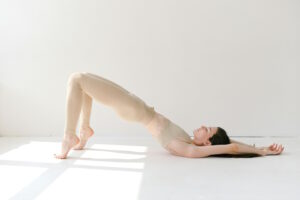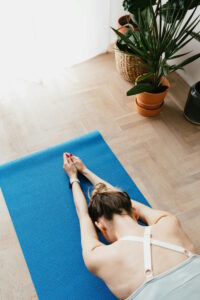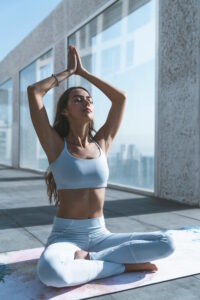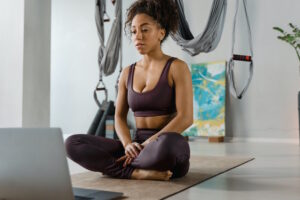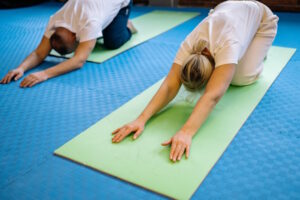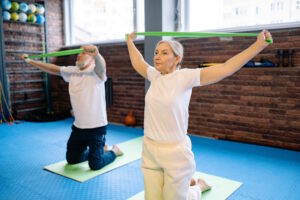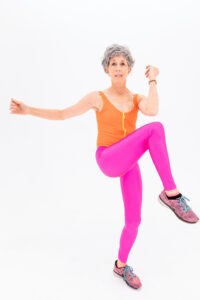
Mindful eating and Pilates are a harmonious duo that can promote not only physical fitness but also a deeper connection with your body and nourishment. In this comprehensive guide, we’ll explore the concept of mindful eating in the context of Pilates, offer insights into how to eat while practicing Pilates, address whether there’s a specific Pilates diet, discuss post-Pilates nutrition, and delve into the mindful eating aspect of Pilates as a mind-body therapy.
How should I eat while doing Pilates?
Eating before a Pilates session is essential to provide your body with the necessary energy for the workout. However, the timing and choices matter:
- Pre-Pilates Snack: Aim to eat a light, easily digestible snack about 1 to 2 hours before your Pilates session. Opt for a balanced combination of carbohydrates and protein, such as a banana with almond butter or a yogurt parfait with granola.
- Hydration: Stay well-hydrated throughout the day. Dehydration can affect your performance and overall well-being. Drink water gradually in the hours leading up to your session.
- Avoid Heavy Meals: Avoid consuming heavy or large meals right before Pilates. A full stomach can make you uncomfortable during the workout.
Is there a Pilates diet?
There is no specific “Pilates diet.” Pilates is not prescriptive about a particular diet but rather focuses on mindful eating and overall nutrition. However, some general principles align well with Pilates:
- Balanced Diet: Pilates emphasizes a balanced diet rich in whole foods, including fruits, vegetables, lean proteins, whole grains, and healthy fats.
- Portion Control: Mindful eating encourages paying attention to portion sizes and eating until you’re satisfied, not overly full.
- Hydration: Staying adequately hydrated is essential for overall health and can support your Pilates practice.
- Avoid Processed Foods: Reducing processed foods, excessive sugars, and unhealthy fats aligns with the holistic principles of Pilates.
- Mindful Eating: Pilates encourages mindful eating, which means eating with awareness, savoring each bite, and paying attention to your body’s hunger and fullness cues.
What should I eat after Pilates?
Post-Pilates nutrition is crucial for recovery and optimizing the benefits of your workout:
- Protein: After Pilates, consume a source of lean protein to aid muscle recovery and repair. Options include grilled chicken, tofu, fish, or a protein shake.
- Carbohydrates: Include complex carbohydrates like quinoa, brown rice, or sweet potatoes to replenish glycogen stores and provide sustained energy.
- Fruits and Vegetables: Incorporate a variety of colorful fruits and vegetables to provide essential vitamins, minerals, and antioxidants.
- Hydration: Continue to drink water to rehydrate your body after the workout.
- Healthy Fats: Include sources of healthy fats like avocado, nuts, or olive oil to support overall health.
Is Pilates a mind-body therapy?
Yes, Pilates can be considered a form of mind-body therapy. It incorporates principles of mindfulness, body awareness, and controlled movement. Pilates encourages you to be fully present in each exercise, connecting your mind with your body. This mindfulness aspect can promote relaxation, reduce stress, and enhance your overall sense of well-being.
Pilates is often used as a complementary therapy for individuals dealing with various physical and mental health conditions. It can aid in rehabilitation, improve posture, alleviate back pain, and contribute to stress reduction. Many people find that the mind-body connection cultivated through Pilates enhances their mental and emotional balance, making it a valuable form of mind-body therapy.
Summarizing Mindful Eating and Pilates
In summary, mindful eating and Pilates complement each other, promoting not only physical fitness but also a deeper connection with your body and nourishment. While there isn’t a specific “Pilates diet,” Pilates encourages a balanced diet and mindful eating. Pre-Pilates snacks should be light and hydrating, and post-Pilates nutrition should focus on protein, carbohydrates, fruits, and vegetables for recovery. Pilates is indeed a form of mind-body therapy, emphasizing mindfulness, body awareness, and controlled movement, which can contribute to overall well-being and stress reduction. By incorporating mindful eating principles into your Pilates practice, you can enhance the holistic benefits of both disciplines.
